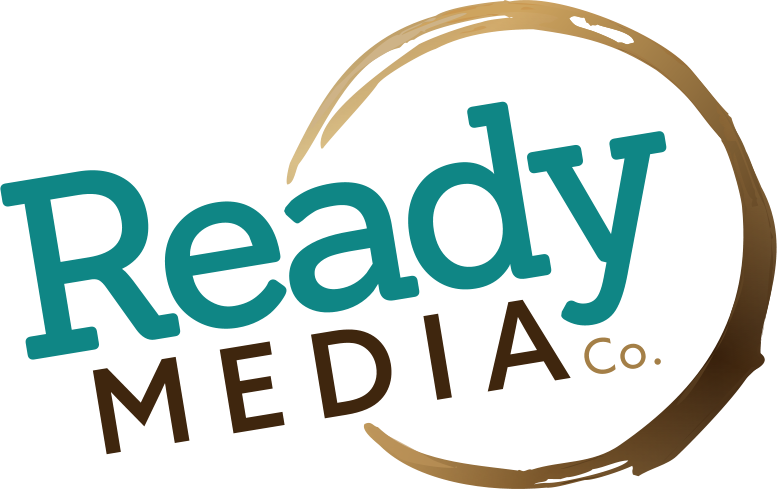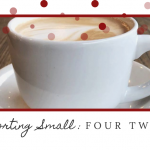In the small business and nonprofit world, determining your audience can be challenging. In fact, we’ve recently heard from a variety of small business owners who say that this is one of their most nagging marketing struggles.
How can we know how to market if we’re not sure to whom we should market? We briefly touched on this in a previous blog, but we’re going to take some of those points and expound.
Here are five questions to ask to help you define and establish your audience.
1. “Is my product age-specific?”
What you sell or provide may attract a specific age range. Even if your product is broad and could be useful to any age group, narrowing your targeted age group will help increase your marketing success.
That doesn’t you mean have to neglect certain age groups while advertising, but it does mean it’s wise to tailor specific marketing campaigns to specific age groups. Even with your own product options, targeted ages may vary.
For Example:
Let’s say you’re a photographer. While all ages benefit from beautiful moment-capturing images, not all ages will be drawn to the same type of photography.
When advertising to young couples, for instance, your marketing (whether digital, social or print) should feature romantic, dreamy scenarios. For families with children, warm, fun and homey images should be marketed. For older couples, maybe you’ll want to advertise more reminiscent shots.
If you’re marketing to businesses for corporate and staff-based photography, you’ll be targeting them with advertisements that include clean, simple and professional shots.
2. “Is my product gender-specific?”
While most products can appeal to both men and women, it’s important to still ask this question and be realistic with your answer. It’s great to want to appeal to a wide range of people (yay variety!), but in marketing, narrow is better.
Even if you are open to anyone purchasing your product, just as we mentioned above about age-specific marketing, when advertising specific items or services, tailor each product differently. Sometimes with gender it’s a shot in the dark since the range of interests between men and women is vast, but it’s better to test narrowly than to shoot too broadly.
For Example:
If you make custom pens that include patterns and designs that typically appeal to women, then it would be wise to target those specific items at women. If you also offer patterns and designs that typically appeal to men, then it would be wise to target those specific items to men.
3. “Is my product region-specific?”
Maybe your product or service would be liked or needed by people around the world. For instance, maybe you sell specially purified water … you don’t have to be local to need water.
But many times, your product or style may attract a specific region. If you have a brick and mortar shop, this is especially important to consider. Unless you’re a highly-sought-after specialty shop that draws people in from around the country, analyzing who lives in your general area and what appeals to them is essential.
For Example:
If you manage a sports store, your products very much depend on what sports teams are most popular in your area. Parallel to that, the way you advertise about your sports team would be dependent on the culture of that region.
To advertise to Boston sports fans, for instance, it’s important to create advertisements and marketing campaigns with regional interests and specialties in mind (differing accents, food, scenes, etc.). Know the “dog whistles” of sorts that will create camaraderie around your products.
You’ll also want to analyze the demographics of the people that live in your area. Are there a lot of families? Mostly young professionals? Is your organization in an area that is highly populated with an elderly community?
Knowing the cultural and demographical nuances of your surrounding area could make or break your marketing efforts, so it’s important to ask those questions!
4. “What style or ‘mood’ does my product emit?”
Whether you manage a nonprofit that deals with heavy political issues or you run a small business that sells fragrant candles and calming lotions, your product or service emits some sort of “vibe.”
Whatever the emotions that are associated with your product, whether they be professional, relaxing, serious, fun or focused, they will impact your audience. Knowing your “moods,” will help you analyze what types of people respond to those “moods.” Once you have a good idea of what the style of your interest group, you can build your marketing style to correspond.
For Example:
The political nonprofit’s mission includes a sense of urgency and weightiness, and so, it’s advertising must mirror such feelings. Your color schemes, fonts, patterns and the voice with which you present your message all must be reflective of that message.
The candle and lotion artist, however, must create advertising that echos a sense of peace, tranquility and rest.
The above examples are two very different “moods” of advertising for two very different types of organizations. Knowing your style will help refine your advertising to target the most relevant audience and allow you to best express your small business or nonprofits’ mission and message.
5. “What price category does my product fall under?”
Depending on what you sell or do, your product provides some sort of value to your customers or clients. In the same way, the value of your products will both attract and detract different audiences.
Some high-end products may draw a wealthier demographic, whereas a thrift or consignment shop could attract those with a tighter budget.
This means, if you’re trying to encourage the more “unlikely” demographic to shop with you, it’s important to think about how you can shape a message that will include them in what you have to offer.
For Example:
If you sell hand-made formal gowns designed with expensive fabrics and custom accents, your advertising will want to be produced with a higher-income audience in mind.
But running a special sale twice a year (this is just one example) may give you the opportunity to advertise your product to the frugal-minded. This allows you to stretch your marketing net to more potential loyal customers.
Whatever your organization, it’s important to think about both your natural and potential consumer base and then tailor your advertising strategies to reach both.
The Key to Successful Advertising:
Consider the questions asked above to decide which groups should be targeted for each specific product you offer. Then, focus particular advertisements about those products to each specific group. This means it’s wise to run a variety of advertisements targeted at a variety of audiences.
Remember: there’s nothing wrong with testing the audience waters out before going full force in your audience-based marketing strategy. Your business may change and develop over time, and guess what – so will your audience!
If you’re still not sure who your audience is or how to market to them, we’re here to help!
Determining your audience and then implementing marketing strategy based on that audience can be complicated and time-consuming. If it’s taking away from the time that could be spent investing in what you do best, it’s time to hand off the marketing to someone you can trust to present your message effectively and truthfully.
If you need help developing and maintaining a marketing strategy for your small business or nonprofit, contact Ready Media today.
We would to love partner with you to successfully share your message with the right audience so that you can focus on what you love to do.






